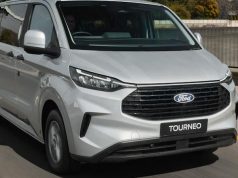After the emergence of the Mercedes-Benz EQS sedan, it only made sense for the automaker to create an SUV version of it as well. The latter is more handsome than the sedan, but is it a better car?
In 2023, when driving it non-stop from Cape Town to Johannesburg, we became well-acquainted with the Mercedes-Benz EQS 450+ sedan. The car impressed us with its comfortable ride quality and frugal energy consumption, but we noted that legroom is limited in the rear.
Most impressive were the car’s best-in-class adaptive LED headlights, lighting up hundreds of metres ahead without blinding oncoming drivers.
With the local debut of the EQS SUV, we were keen on a long-distance comparison. So we loaded up for a drive from Hermanus in the Western Cape to Plettenberg Bay in neighbouring Eastern Cape, a total of about 900 km.
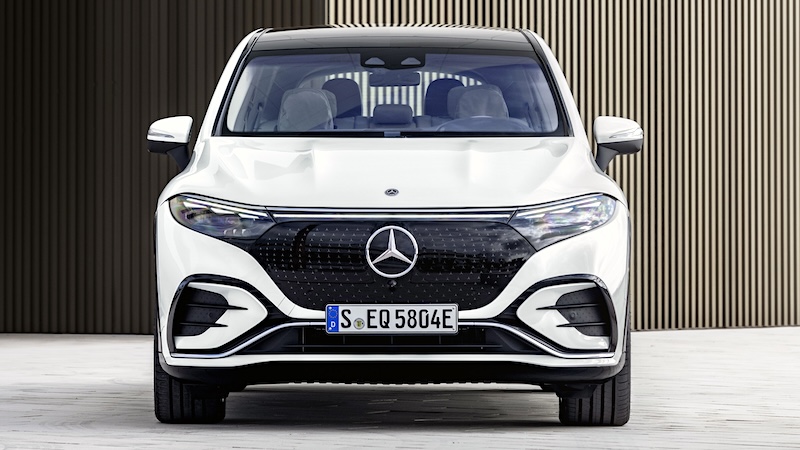
Specifications of Mercedes-Benz EQS450 4Matic SUV
- Price: R2,732m (before options, August 2024)
- Claimed range: 594 km (Tested range: 490–530 km)
- Usable battery capacity: 118 kWh
- Max. charge rate: 400 V, 200 kW
- Max. power/torque: 265 kW / 800 Nm
- 0-100 km/h: 6,1 seconds
- Top speed: 210 km/h
- Luggage capacity: 645 litres
- After-sales support: 5-yr / 100 000 km maintenance plan and 2-year warranty (unlimited km)
- Rivals: BMW iX xDrive50 (R2,35m), Mercedes-Benz EQE350 4Matic SUV (R2,19m), Jaguar I-Pace EV400 AWD R-Dynamic HSE (R2,47m), and the Volvo EX90 (From £96 255 in the UK. Local price TBA)
Exterior
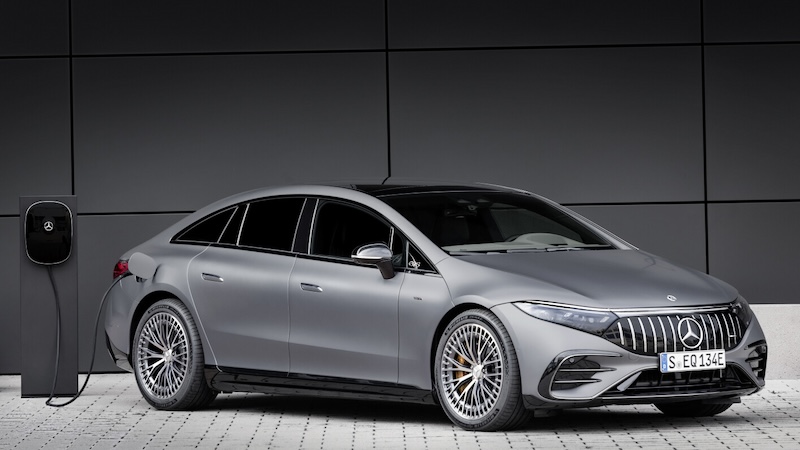
When looking at the EQS sedan (PICTURE ABOVE), it seems its creators were overly obsessed with designing the world’s most aerodynamic sedan. If that design committee had turned the dial any further, they would have turned the car into a Citroën Xsara Picasso.
After the somewhat polemically styled EQS sedan, Merc’s design department has clearly toned things down.
In contrast, the beauty of the EQS SUV lies in its restrained simplicity. With a smooth and polished appearance, it exudes an understated elegance that commands attention without being flashy. Its design language, combined with its sheer size, speaks for itself, conveying confidence without the need to prove anything.
Interior
For the past decade, some Mercedes models occasionally suffered from creaky sounds when their hard panels were pressed too firmly or when the chassis flexed. I’m pleased to report that Mercedes seems to have addressed this issue. The test car was entirely creak-free, and hopefully, this improvement extends to all future models. However, the surface around the cup holders still felt a bit cheap and could benefit from an upgrade.
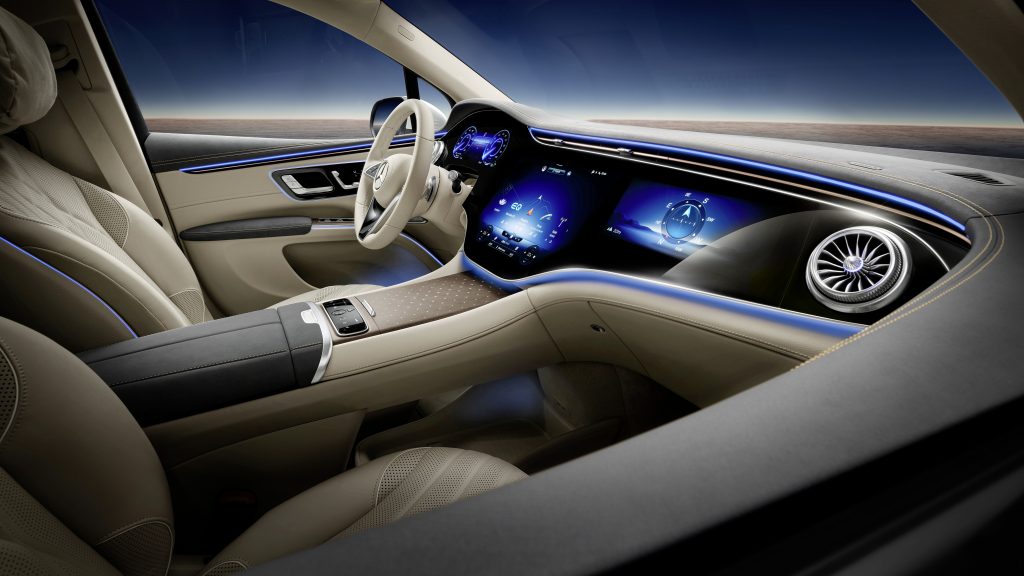
After falling in love with Merc’s intelligent headlights, I was disappointed to learn these matrix LED lights are not part of the EQS SUV’s standard equipment. To get this valuable bit of tech, which Mercedes calls Digital Light, you have to add the Advanced Plus Package (R96 800) when ordering your car.
Choosing this package will also get you the Driving Assistance Package Plus, which includes features like adaptive cruise control and evasive manoeuvre support.
Cabin comfort
Another good reason for choosing the SUV over the sedan, apart from a design that’s more pleasing to the eye, is the cabin’s spaciousness. The rear accommodation in the EQS sedan is limited, which is odd for a car that measures 5 216 mm from snout to bum.
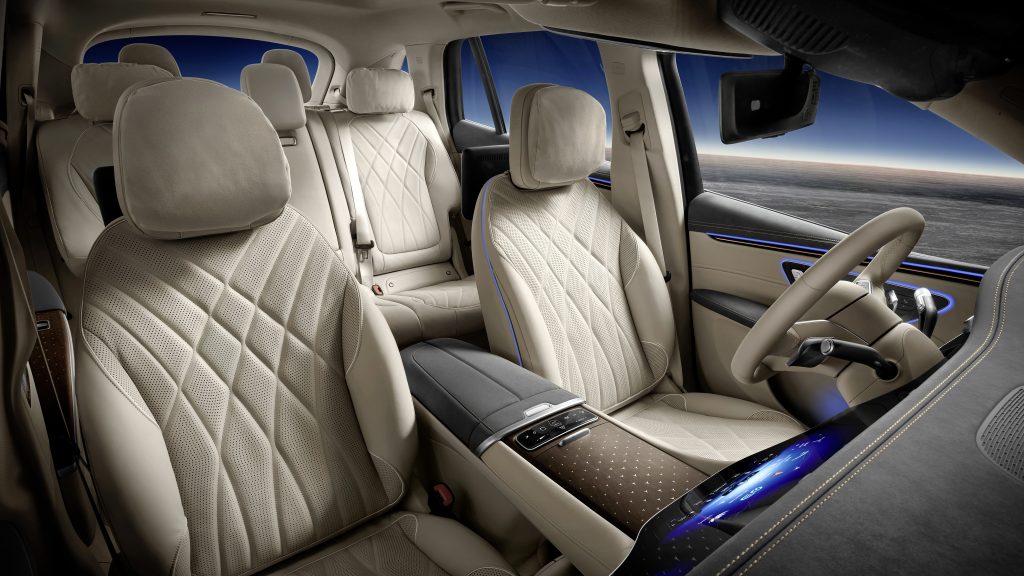
The SUV, which is a few centimetres shorter, provides its pampered occupants with acres of space. The rear bench is wide too, allowing three passengers to sit next to each other in comfort, their feet resting on a floor that is flat. As can be expected, the rear passengers have separate air-con controls within easy reach.
Size 12 boot
At 645 litres, the boot is massive. There is an option for two additional seats, but our test car was a five seater. The seatbacks of the rear bench fold forward (separately) at the press of a button.
As is often the case with cars riding on enormous tyres, there’s no spare wheel included. Instead, there’s a tyre repair kit… that I accidentally broke by dropping it on the boot sill. It happened when I tried to repair a puncture. With that option no longer available, we carefully drove to a Total garage, where the holey tyre was plugged for R100.
Infotainment
With so many functions of modern cars migrating to touch screens, the operating systems become complicated and often overwhelming, also in the EQS. To make matters worse, the remaining buttons – many of them now on the steering wheel – are of the frustrating, so-called “haptic” kind.
To operate them does not feel intuitive, and I found it hard to make some adjustments, for example to the adaptive cruise control.
The sound system is good, as it should be in a car in this echelon, but not exceptional.
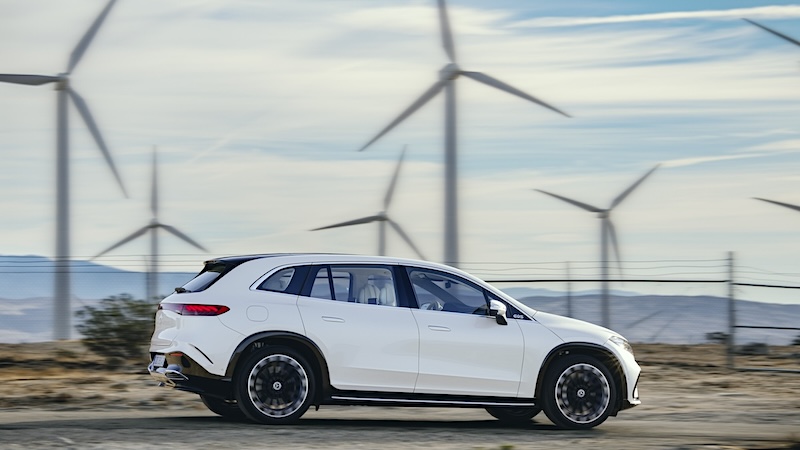
Driving the EQS
Being driven in the EQS SUV feels like an occasion. In town, the luxurious cabin is cathedral quiet. At highway speed, there’s just a little too much noise from the road and from air rushing over the vehicle. Still, being chauffeured in the EQS SUV is a sublime experience. Piloting it, however, is different.
While many EVs carry substantial weight, they often don’t feel as heavy as they are. However, this one feels noticeably heavier and clumsier than vehicles like the BMW iX or something like a Mercedes G-Class or GLS. Admittedly, maneuvering extra-large SUVs through traffic is never effortless, but steering this particular model feels especially laborious.
Rear-wheel steering
Thankfully, the rear wheels of the EQS SUV can change their angle to the left or right to help with steering the car. This reduces the turning circle to a reasonable 11,9 m.
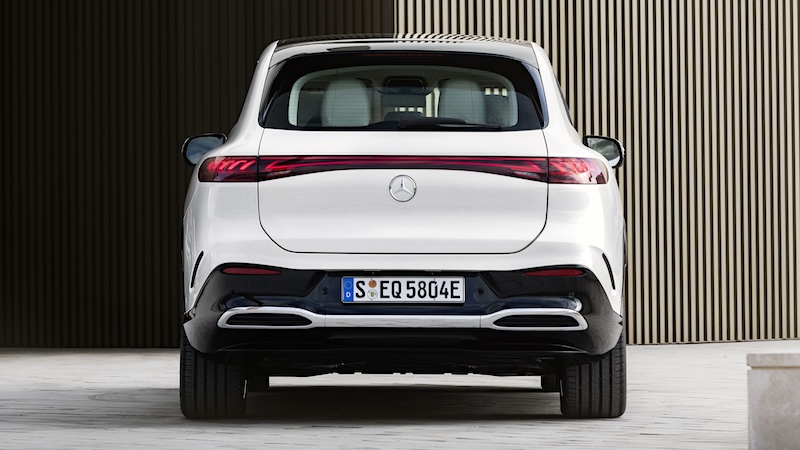
The rear-wheel steering is designed to enhance the car’s handling, and the EQS SUV certainly follows the driver’s intended line through corners with precision. Like many EVs, it benefits from having its large, heavy battery positioned beneath the cabin floor. This low center of gravity significantly boosts road-holding, allowing the SUV to manage its substantial weight more effectively.
But none of this means the EQS SUV inspires confidence at higher speeds. At anything above 140 km/h, it feels ever so ‘floaty’, almost like a people carrier. With a national speed limit of 120 km/h, you might say it’s of no great concern, but most of us exceed 120 km/h while overtaking.
Gravel travel
Being an SUV with all-wheel drive, the sophisticated drive system of the EQS SUV has an off-road mode. When activated on the infotainment screen, it raised the car by 25 mm. Sadly, this doesn’t mean the car rides comfortably on gravel.
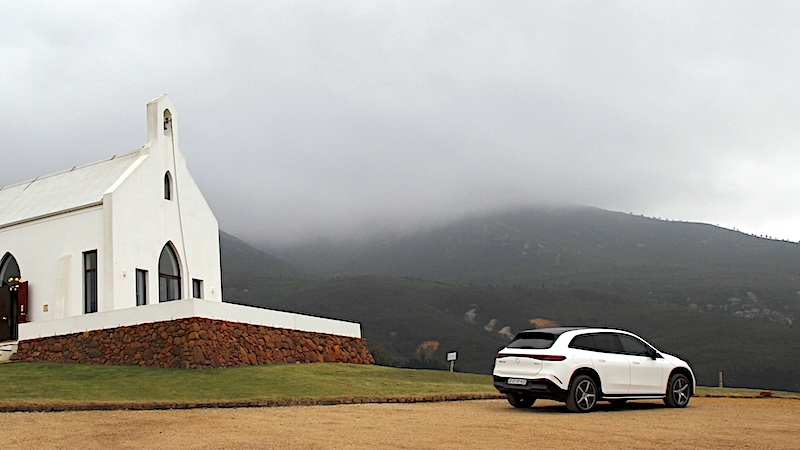
Visiting Ataraxia wine estate in the Overberg (PICTURE ABOVE) requires some gravel driving to reach the tasting room. Perhaps to compensate for the raised body of the SUV, the engineers have tuned the suspension harder than the sedan’s. This was especially noticeable on farm roads.
The mass of the drive battery is another of many curve balls thrown at the designers of electric vehicles and this could also have contributed to the car’s compromised ride. The lack of ride comfort came as a surprise, because the car wasn’t wearing low-profile tyres and it has adaptive air suspension, which comes as standard.

Range and efficiency
After 1 178 km, the display showed the car’s average energy usage as 24,4 kWh (kilowatt-hours) per 100 kilometres, which is acceptable for a huge and heavy car such as this. (It weighs as much as it costs, sort of: R2,7m for 2,7t.)
With its battery charged to 100 percent, the display told me I could drive 500 km before the battery is flat. Considering most of our driving was done at 120 km/h, it’s a decent figure.
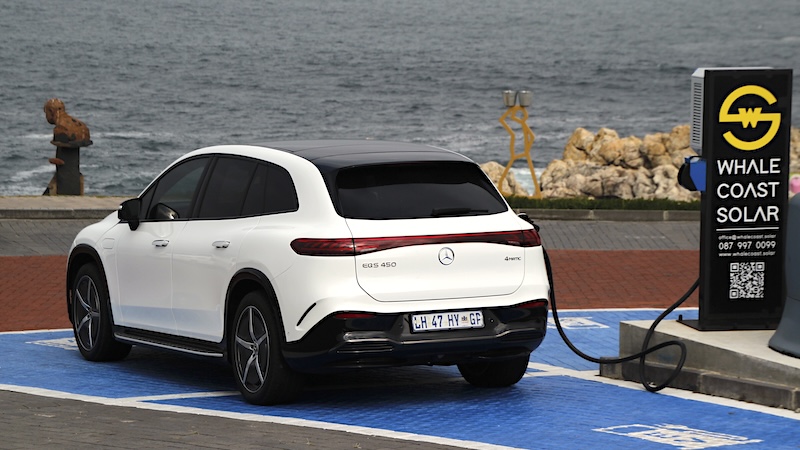
Charging
For home charging, EV owners will have the charger installed where it’s convenient. To them, it doesn’t matter much where the car’s chart port is. But when charging the EQS at public chargers, I wished the car’s port was closer to its nose. Instead, it’s in the same place where you’d find a petrol car’s fuel filler – towards the rear.
This forced me to reverse the car into every charge bay, to allow the cable to reach the car’s plug point. Not everyone wants to reverse park a car as big as this, Mercedes!
Conclusion
Mercedes-Benz can build satisfying electric vehicles, like the EQA, EQB and EQC. The EQS models, however, are not Stuttgart’s finest work. Going forward, it might be simpler and less expensive for the manufacturer to electrify the S-Class and GLS. The result could be superior to the EQS too.
Rating
The Mercedes-Benz EQS450 4Matic SUV scores 3 out of 5.
3.0 out of 5.0 starsAlternatives to the EQS SUV
Because the local EV market is in its infancy, the EQS doesn’t really have a direct competitor. The BMW iX xDrive50 (R2,35m) is an excellent alternative, but it’s styling might be too much for conservative tastes and it’s a little smaller too. Also, Mercedes-Benz devotees might find understated Audi a better brand fit than brash BMW. But the current crop of Audis lack range, a shortcoming that Audi will address soon.
A buyer who can compromise on interior space (compared to the EQS SUV) should strongly consider the Mercedes-Benz EQB 350 4Matic Progressive (R1,38m) or Mercedes-Benz EQE350 4Matic SUV (R2,19m).
Don’t overlook the Jaguar I-Pace EV400 AWD R-Dynamic HSE (R2,47m) as an option, as it offers generous interior space as one of its strengths. There are pre-owned bargains to be had too.
And finally, if you want to feel ten years younger, go for the MINI Countryman SE ALL4 (R1,11m).
Note that all the alternatives mentioned here are fully electric.
























